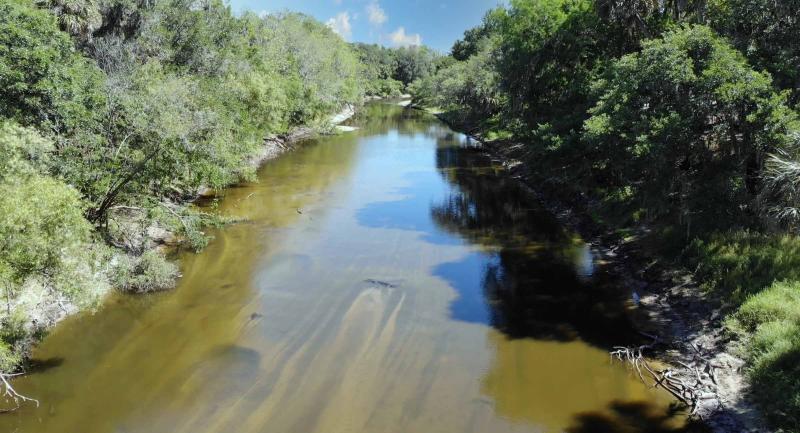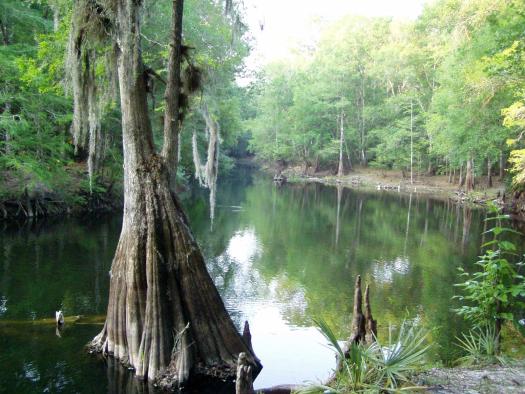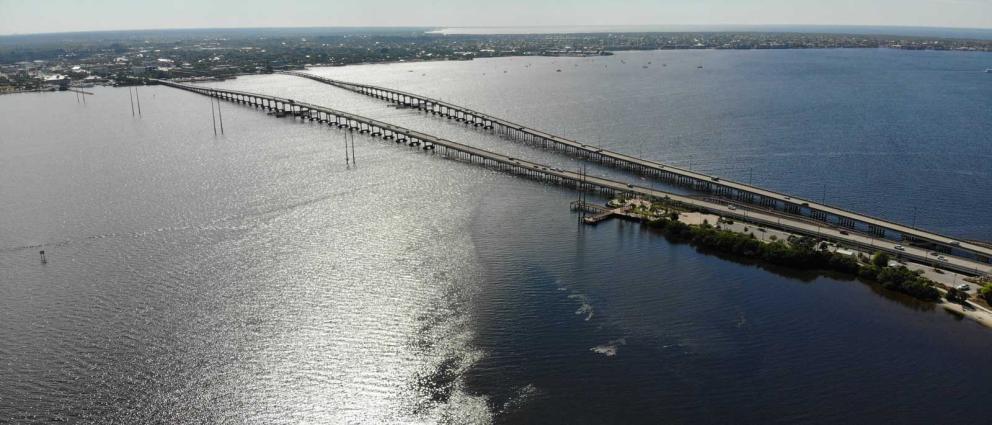The Peace River gets its fresh water from rainfall. Annual rainfall averages approximately 53 inches, with more than half occurring between June and September. Most of the rainwater reenters the atmosphere through evaporation and plant transpiration. The rest recharges the aquifer or runs off into the Peace River and its tributary streams.
The river is primarily a blackwater river. This type of river drains pine flatwoods and cypress swamps and has dark, stained waters from decomposing plant material. The waters of the Peace River are a dark brew of leaf detritus, organic matter and tannin, distilled from the peaty soils of the wetlands and forests through which it flows.
Broad, sandy deltas alternate with tree-lined bluffs for much of the river’s length. The riverbed consists of layers of sand, clay and limestone beds in the upper portion. The layers were formed from the fossil remains and waste products of ancient marine organisms deposited on the floor of the ocean during the Miocene Epoch, between 5 million and 26.5 million years ago. The fossil layers contain phosphate, an essential component of fertilizer.
The river’s fresh water eventually meets Charlotte Harbor, helping to fuel the productive estuary.
There’s more on the harbor later, but for now, let’s travel through the Peace River’s tributaries.



